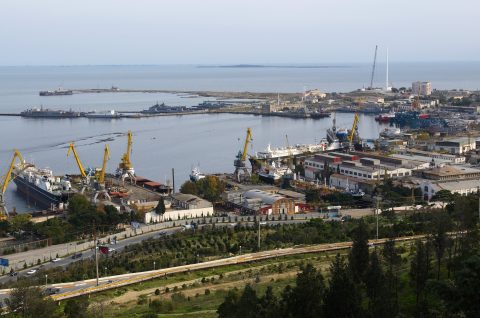China turns to the Middle Corridor and prepares for investments

It has been almost two years since the Middle Corridor came under the spotlight after the war in Ukraine began. The corridor was forced to grow fast amid multiple challenges to accommodate parts of rail traffic diverting from the Russian route. However, during this period, it did not seem to be among the interests of China and its railways, which continued using the Northern route heavily. This seems to change now, with China willing to invest and develop the corridor for China-Europe rail freight services.
The recent high-level meeting between Kazakh President Kasym-Jomart Tokayev and President of the People’s Republic of China, Xi Jinping, brought forward some transport and infrastructure development plans. During the official visit, the two governments signed multiple agreements, with the most important of them targeting the development of the Trans-Caspian International Transport Corridor, commonly known as the Middle Corridor.
Infrastructure and rail transport solutions
The Kazakh Ministry of Transport explained that the new development agreement will be implemented within the framework of existing BRI agreements between the two states and in conjunction with Kazakhstan’s ‘Nurly Zhol’ financial project aiming to stimulate and develop domestic transport infrastructure.
Simply put, the two sides agreed on developing the Middle Corridor by integrating it into China’s BRI. As a result, China will pull out funds to support projects within Kazakh territory to improve Middle Corridor operations and “make them smooth.” In doing so, the two countries will invest in port infrastructure, transit container transport, combined transport and other infrastructure like pipelines.
A working group should be established on a Ministerial level to monitor the development of cargo transport in the corridor, which, according to the Kazakh and Chinese governments, will also start accommodating China-Europe container trains more regularly.
European Silk Road Summit 2023
Are you interested in the latest developments of the Silk Road market? Then you cannot miss this year’s European Silk Road Summit held from 29 November till 1 December in Budapest. After an opening session about the current volumes on the main route and the Middle Corridor, we will dive deeper into these routes and the developments made. Additionally, we will talk about the CEE and Balkan regions, Italy and the BRI and geopolitics on the New Silk Road. We conclude with the election of a new RailFreight Ambassador.
You can find the programme of this year’s event here. If you want to register for the summit, you can do this here. Note that there is an interesting site visit to the METRANS terminal in Budapest on the last day, 1 December!
Also read:





